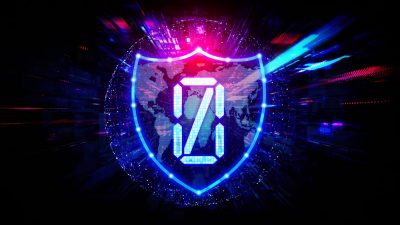Security is a challenge and running behind vendors to provide a complete business solution for every security challenge is a non-productive way of developing a security infrastructure. Enterprises are keen on adopting the zero trust security model but the challenge still looms large as the data gets distributed. Zero Trust security is an IT security model that requires a strict verification for each resource whether it’s an employee or device. The network model will strictly identify the unauthorized access whether it’s sitting inside or outside the network perimeter. No single specific approach is associated with zero trusts; it’s a holistic approach that is being used for network security incorporating various principles and technologies.
Enterprises around the world are approaching the zero trust security models with positive outlook due to its efficiency and flexibility based on the network requirements. The traditional model of data security is based on the technology and access verification, so each insider is given unlimited access to every part of business data. So an outsider who gets simple access to the insider network can exploit the condition to gain access to various types of data. Zero trust security by default doesn’t trust anyone from inside or outside the network and verification is required from everyone trying to gain access to resources on the network. Instead of only relying on the security vendors claims about zero trust security models, it’s better than the enterprises benchmark them based on the five critical success factors instead.
Verify Who
Businesses are looking to various challenges today and what can actually boil down to the revenue growth? Verifying who is accessing the internal network will determine the authentication of complete network and security health of network operation. Some of the security vendors have added steps of authentication and verification for the employee, before given access to the internal network of data. The data is kept in distributed format but before accessing each cluster of data, the employee needs to go through the process of verification and authentication. A three-step verification process is most commonly used by the security vendors.
1. Employee verification Name and Id.
2. Device verification- Mobile or System.
3. Authentication of Employee purpose.
Privileged Access Request
There are many starting points on the path to Zero Trust. However privileged access is one of the regions that have been the gray area when it comes to a security breach is the easiest way for the cyber attackers to gain access to sensitive data by compromising the user identity. Such factors can get worse with a privileged user who gets better access to the data. In 2019, a survey was conducted for all the latest data breaches while 80 percent of the security breaches involved the privileged customer. While 65 percent of the enterprises allow unrestricted, unmonitored and shared use of privileges account according to the Gartner. Many organizations that are looking for pathways to adopt the zero trust security model should start with identity, for the simple fact, Gartner recommends putting privileged access management on top of an organized list of security projects.
Secure Admin Environment
Admin will be the most powerful central point that will control the verification process along with data access through various points. One reason why many of the zero trust security vendors have added more than three admin for a given environment based on the verification process. Each data relates to a certain particular department- so a three-person step will lead to a better authentication process. With the manager, Team lead and network admin each holding the key to the data. However, any one of them won’t be a single entity that can control the complete process of authentication.
Audit Everything
One purpose of zero trust security model is the complete audit process that can close various security leak points. Auditing the complete security infrastructure will depend on how big is the organization and how can we improve the current process to identify future threats. Auditing every data platform along with various verification and authentication stages needs to be depended on the sequential requirements. Auditing everything that is present inside the corporate procedure will depend on corporate data.
Adaptive Security Controls
Adaptive Security is an approach that is more widely being used in response to the changing environment. With interconnecting approach for all the devices has made the adaptive security threat visibility, detection, and prevention that consistently became more effective. The adaptive security architecture would be able to anticipate, respond to and contain threats while reducing threat amplification, attack surface, velocity and recovery time. Adaptive security controls are more situational depending upon the industry requirements that can completely alter the environment during the threat and improvement. Adaptive security controls rely on the feedback situations that will increase the ability to respond to various types of threats. It’s a dynamic, autonomous response found in nature which adapts according to the environment.
Conclusion
Zero Trust Security Model is one of the biggest paradigm shifts in the security infrastructure wherein we understand that perfect protection cannot be achieved. The goal should be having a more resilient security infrastructure in place to compensate for the security threats that keep coming. Enterprises today need to work in a more strategized manner, with ever-increasing cyber terrain, you need to understand the internal segmentation, watch out for breaches and respond faster and more effectively through superior knowledge of the environment.
To know more, you can download our data security whitepapers.









































































